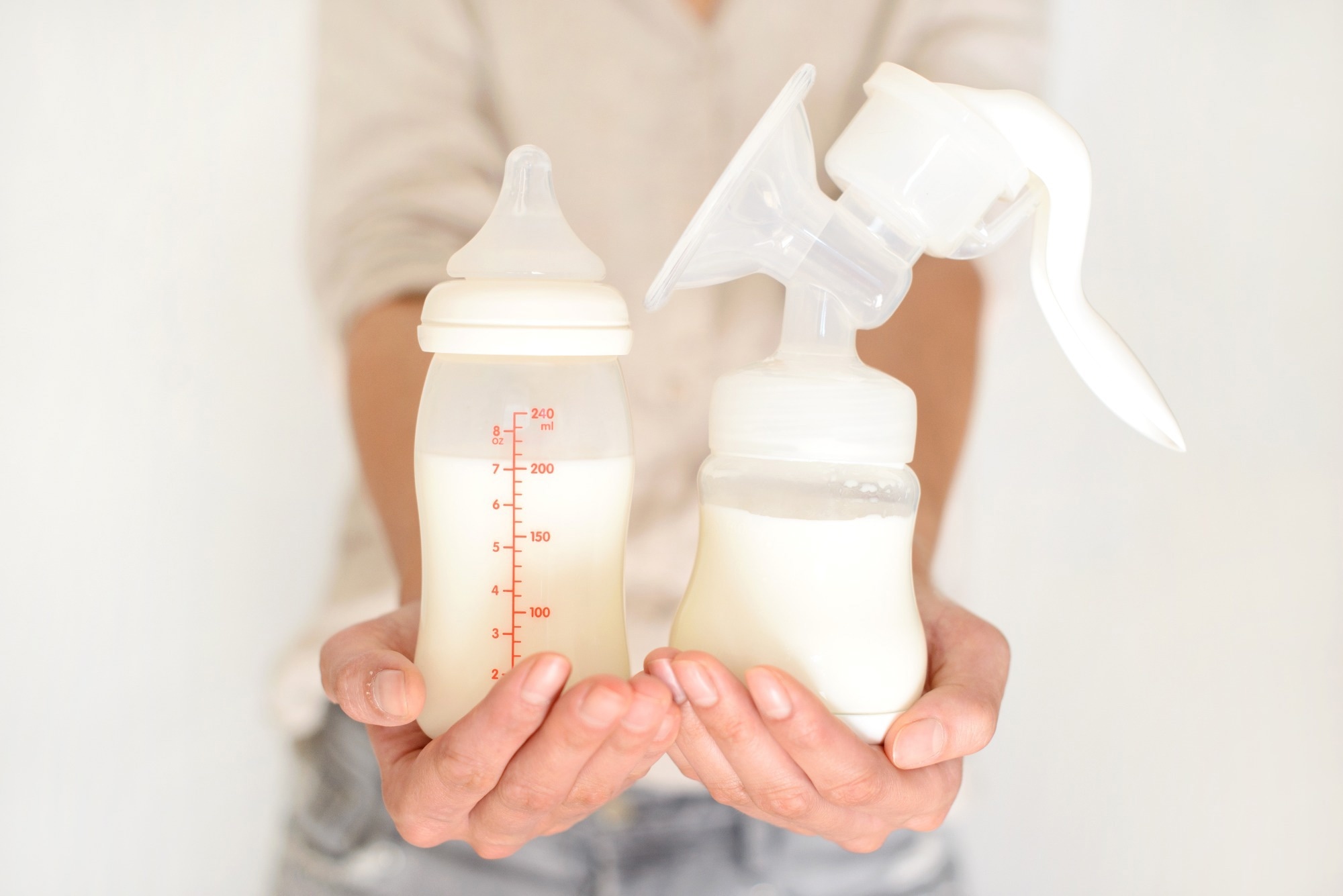In a recent study published in the Nutrients Journal, researchers compared breast milk dietary intake, nutritional status, and nutritional composition from omnivorous diet-abiding milk donors (donors) and vegetarian/vegan lactating women (veg).
 Study: Human Milk Composition and Nutritional Status of Omnivore Human Milk Donors Compared with Vegetarian/Vegan Lactating Mothers. Image Credit: evso/Shutterstock.com
Study: Human Milk Composition and Nutritional Status of Omnivore Human Milk Donors Compared with Vegetarian/Vegan Lactating Mothers. Image Credit: evso/Shutterstock.com
Background
The World Health Organization (WHO) advocates exclusively breastfeeding infants for the initial six months of life and its continuation after introducing complementary foods for ≥2.0 years. In cases where maternal milk is unavailable, human donor milk (DHM) is preferred for preterm neonates.
Recently, a shift in reproductive-age women living in Westernized societies toward consuming vegetarian diets has been observed. Sometimes, these women are not approved to donate milk, and data on their milk composition is limited.
Premature neonates have greater nutritional requirements; therefore, assessing the nutritional content of DHM and the factors affecting the composition is required.
About the study
In the present cross-sectional and observational-type study, researchers compared the breast milk nutritional composition of donor DHM with that of vegetarian/vegan women residing in Spain.
Individuals were enrolled in the study from August 2017 to February 2020 from pediatric primary care centers, online communities, websites, and food shops.
The donor group comprised omnivorous diet consumers with full-term infants, who donated milk ≥1.0 times in the previous two months to the Regional Human Milk Bank (RHMB), whereas the veg group comprised healthy vegan/vegetarian mothers, lactating for ≥3.0 weeks postpartum.
Blood, urine, and milk samples were obtained from 92 and 20 donor and vegan group individuals, respectively, to assess the fatty acid (FA) profiles and mineral and vitamin content.
In addition, in human milk obtained from sample populations of the two groups, the team investigated lipid profiles for polar and neutral lipids, triacylglycerols, and relative phospholipid content. Diets were assessed using 5.0-day diet records while accounting for nutritional supplementation.
In addition, the participants filled out food frequency questionnaires (FFQ) and sociodemographic and health surveys.
Data were obtained on maternal age, nationality, employment, level of education, dietary exclusions in the previous two years, iodized salt intake, supplementations, tobacco and alcohol intake, physical activity, medical history, medications, children, pregnancy, delivery, lactation, pre-pregnancy weight, and gain in weight during pregnancy.
In addition, the mothers provided data on infant sex, medical history, and somatometric parameters. Nutrient and caloric intake were assessed using the Food Composition Tables by Complutense University’s nutrition department in 2010.
The United States agriculture department’s Food Data Central database and the Food Composition Database of Spain were used, and the Healthy Eating Index (HEI) values were determined.
The team compared regular nutrient consumption with the Institute of Medicine (IOM) dietary reference intake (DRI) values and the nutritional reference values published by the European Food Safety Authority (EFSA) values. Polyunsaturated FA (PUFA) intake was assessed using the Food and Agriculture Organization (FAO) and IOM guidelines.
Results
The mean values for veg versus donor individuals, for docosahexaenoic acid (DHA) consumption, was 0.1 versus 0.4 grams daily; serological DHA proportions were 0.4 versus 0.8%, respectively, and milk DHA proportions were 0.2 versus 0.3%.
The corresponding vitamin B12 levels in milk were 546 versus 483 pM, respectively. Milk phosphatidylcholine levels among veg and donor individuals were 27.0% and 31.0%, respectively. The corresponding values for iodine in milk were 126.0 and 159.0 mcg per liter, respectively. The most noteworthy differences were observed in the phospholipid (PL) distribution and fatty acid profiles.
Veg individuals consumed lesser fats, 33% lesser saturated fats, and considerably lower trans-fats and cholesterol. Thus, Veg milk had greater unsaturated FA and lesser saturated fatty acids and trans-fats. veg individuals showed higher serological high-density lipoprotein values.
However, the plasmalogen content in red blood cells and serum was significantly lower than in donor milk. Concerning essential FAs, veg individuals showed deficient EPA and DHA intake, and low omega-3 FA intake, compared to n-6 FA.
The DHA consumption of veg individuals (110.0 mg daily) was <50% of the intake by donor individuals (380.0 mg daily), and therefore, the DHA content in veg milk was <50% of that in Donor milk (0.2% versus 0.3%, respectively), not attaining dietary recommendations.
The n-6/n-3 ratio was greater among veg individuals (9.90 versus 7.80) and in their erythrocytes, milk, and serum. In the total lipids of veg group-breastfed neonates, linoleic acid (LA) values were greater, and DHA values were lesser than those of Donor group-breastfed neonates.
The most abundant PL in breast milk was sphingomyelin, comprising >40% of the polar lipid content. Veg mothers had lower phosphatidylcholine (27.0% versus 31.0%) and higher phosphatidylethanolamine (31.0% versus 25.0%) proportions in milk.
About 85.0% of veg mothers used vitamin B12 supplementations, with a mean regular dosage of 312.0 mcg daily, and the serological levels were comparable to the values for donor individuals.
Additionally, vitamin B12 content was greater in veg milk. In total, 14 (70.0%) veg individuals used supplementation with B12 doses of ≥2,000.0 mcg weekly, amounts advocated by American Dietetic Association specialists.
Further, nicotinamide content among veg individuals was 50% of that of Donor individuals. Veg individuals consumed greater quantities of vitamin E; however, their milk or serological α-tocopherol content was not greater than donor individuals. Selenium, phosphorus, and iodine content were lower in veg milk.
Conclusion
The study findings showed that veg milk differed from donor milk, particularly due to markedly lower DHA content. However, increased dietary awareness and properly dosed supplements may bridge the gap, as was achieved for cyanocobalamin.
DHA supplements may be recommended for vegetarian/vegan mothers desiring to donate milk. In addition, increased intake of linolenic acid-rich foods, such as linseed/flaxseed oil, chia seeds, hemp seeds, or oleate-rich foods, and low-LA-level sunflower oils could be suitably recommended for vegetarian/vegan mothers wanting to donate milk.